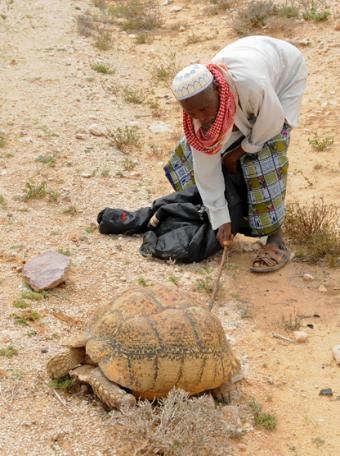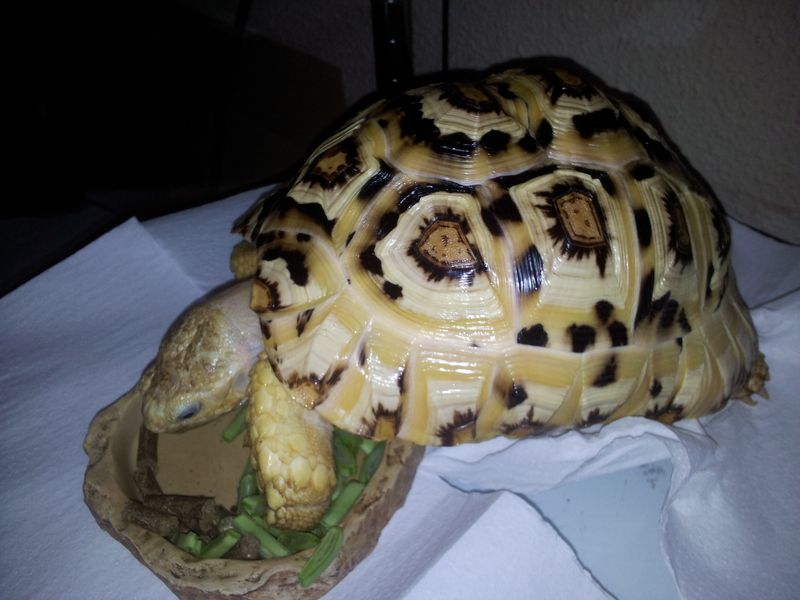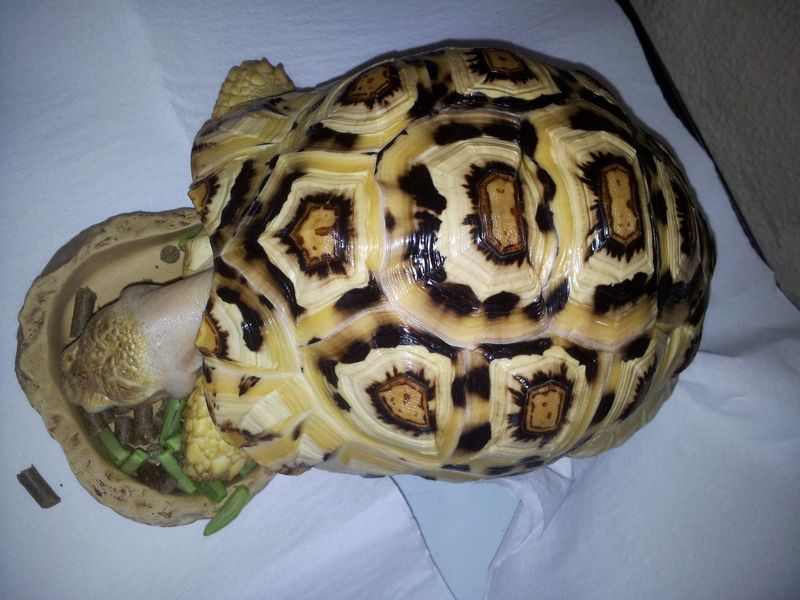Very interesting..love the pics thank you for sharing...
You are using an out of date browser. It may not display this or other websites correctly.
You should upgrade or use an alternative browser.
You should upgrade or use an alternative browser.
Man, "somalica" are impressive.
- Thread starter Baoh
- Start date
- Status
- Not open for further replies.
Yessir in the year 2000.
Heres a good article that sums it up.
http://www.anapsid.org/heartwater.html
Heres a good article that sums it up.
http://www.anapsid.org/heartwater.html
- Joined
- Nov 7, 2012
- Messages
- 5,168
- Location (City and/or State)
- South of Southern California, but not Mexico
tortadise said:Yessir in the year 2000.
Heres a good article that sums it up.
http://www.anapsid.org/heartwater.html
I see, thanks for the link.
Will
Impessive and beautiful
tortadise said:Yessir in the year 2000.
Heres a good article that sums it up.
http://www.anapsid.org/heartwater.html
During Alan Shoemaker's presentation at the TTPG he brought up the tick issue and showed a picture of a tortoise egg and said "that tortoise doesn't have any ticks". I'm a bit uneducated (actually a lot uneducated) about importing and exporting, but I would interpret his statement as it would be possible to import eggs of Somalia or Ethiopian leopard tortoises...in theory.
I suppose it would be a long and difficult process to go through to actually do this. But, after I make my millions and I have all the free time in the world, I'll give it a shot.
Eggs are banned as well, I think he was being sarcastic.
Lol neal. Yep 4" law ruins that idea I suppose.
I was sure that eggs were banned as well, but now I can't find whatever led me to that conclusion.
yagyujubei said:I was sure that eggs were banned as well, but now I can't find whatever led me to that conclusion.
Yeah, I looked over the link that Kelly posted after you said that and didn't see that anywhere.
Either way, I'm sure it's very difficult or otherwise impossible, not to mention risky spending money and energy for eggs that may not even hatch. Otherwise, someone might have done it already.
Here are a couple additional pictures. The young one was actually free to good home on a spanish site in 2009.






- Joined
- Nov 7, 2012
- Messages
- 5,168
- Location (City and/or State)
- South of Southern California, but not Mexico
"APHIS is working to establish effective treatment and biosecurity protocols for tortoises that will remove the threat of heartwater disease. When such protocols and treatments are established and when tortoises and other reptiles already in the United States have been effectively treated for exotic ticks and all exotic ticks are eradicated, the ban on the importation of these tortoises, as well as the ban on their interstate movement, will be lifted."
I get the impression from reading the information on the link Kelly provided that the tortoise even without a tick, could carry the bacteria, get bit by some other tick, then spread the heart-water disease to hoof-stock. So it's not just the ticks themselves, but the tortoises that carry the bacteria. Am I getting this right?
So is there some test for the tortoises' blood? It's a bacteria, so lily there is an antibacterial treatment that would work.
Do you know of any follow-up to this, has there been a heart water disease outbreak associated with an imported tortoise?
Will - spinning off topic again.
I get the impression from reading the information on the link Kelly provided that the tortoise even without a tick, could carry the bacteria, get bit by some other tick, then spread the heart-water disease to hoof-stock. So it's not just the ticks themselves, but the tortoises that carry the bacteria. Am I getting this right?
So is there some test for the tortoises' blood? It's a bacteria, so lily there is an antibacterial treatment that would work.
Do you know of any follow-up to this, has there been a heart water disease outbreak associated with an imported tortoise?
Will - spinning off topic again.
The skin coloration on that juvenile is interesting, Dennis.
I read it and commented on it.
Setting aside what I already typed, it (the idea as explored) is a backward-looking process with a speculated rationale to explain or interpret the findings. To further strengthen it, one should test the newly resulting hypothesis via a forward moving process. In other words, feed a bunch of different leopard hatchlings from many different sources and of different "types" high volumes of nutritious and energy-rich foods. Examine growth rate and ultimate growth at chosen (perhaps yearly) milestones. If adherent to the idea, then most should grow much larger much quicker than is considered typical, thereby lending it greater validity. However, even in situations where this type or a comparable type of environment is artificially promoted, I can only think of a handful or less of leopards that ended up growing at an extremely rapid rate. Off the top of my head, Hrothgar (owned by yagyujubei) is one such above average specimen. Another was one random babcocki hatchling that hit nearly 11" scl at one year (pyramided and the owner used to post on turtletimes before that site largely died for whatever reason) quite a few years ago (so I lost track, unfortunately). I would imagine we would see more freakishly large pardalis if all that matters is lots of quality food. I see above average results by providing more (and more nutritious) food, but nothing crazy in most instances and with significant variability from animal to animal. Even in ad libitum feeding setups, it seems as though gigantic freaks are few and far between in captive production here in the US.
Will said:They get big in southern Africa as well.
This one is in Karoo National Park. Those larger rocks are 'about' football size, that would be the American lemon shaped football, not what we Americans call a soccer ball.
And here are few others, with other things for size reference, also in Karoo National Park.
Lots of quality food and your leopard will grow big too.
look at the paper attached to post #4 on
http://www.tortoiseforum.org/thread-59479.html
to see what I mean.
Will
I read it and commented on it.
Setting aside what I already typed, it (the idea as explored) is a backward-looking process with a speculated rationale to explain or interpret the findings. To further strengthen it, one should test the newly resulting hypothesis via a forward moving process. In other words, feed a bunch of different leopard hatchlings from many different sources and of different "types" high volumes of nutritious and energy-rich foods. Examine growth rate and ultimate growth at chosen (perhaps yearly) milestones. If adherent to the idea, then most should grow much larger much quicker than is considered typical, thereby lending it greater validity. However, even in situations where this type or a comparable type of environment is artificially promoted, I can only think of a handful or less of leopards that ended up growing at an extremely rapid rate. Off the top of my head, Hrothgar (owned by yagyujubei) is one such above average specimen. Another was one random babcocki hatchling that hit nearly 11" scl at one year (pyramided and the owner used to post on turtletimes before that site largely died for whatever reason) quite a few years ago (so I lost track, unfortunately). I would imagine we would see more freakishly large pardalis if all that matters is lots of quality food. I see above average results by providing more (and more nutritious) food, but nothing crazy in most instances and with significant variability from animal to animal. Even in ad libitum feeding setups, it seems as though gigantic freaks are few and far between in captive production here in the US.
- Status
- Not open for further replies.
Similar threads
- Locked
- Sticky
- Replies
- 2
- Views
- 25K